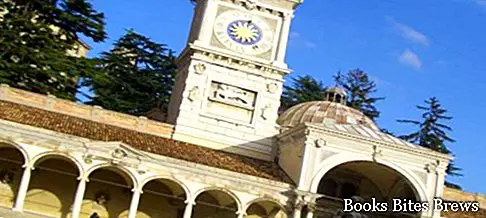What to see in Udine, one-day itinerary including the main monuments and places of interest, including Castle, Casa della Contadinanza, Duomo, Loggia del Lionello, Loggia di San Giovanni, Torre dell’Orologio and Archiepiscopal Palace.
Tourist information
Considered the capital of the historic region of Friuli, Udine is developed around a hill, on which stands the castle overlooking the city.
Geographically, it is located about twenty-two kilometers from Slovenia and just over fifty from Austria.
Among the main monuments and interesting places to visit in Udine, a city that has the typical medieval aspect, the castle is included, which looks more like a stately residence than a military infrastructure, with its Roman-sixteenth-century structure due to the work carried out by Giovanni da Udine, who, starting from 1547, worked to complete the works of the building.
In the following centuries further modifications were made to make it suitable for other uses, including prison, barracks and town hall.
Inside the castle is the 12th century Parliament Hall of the Patria del Friuli, one of the oldest in Europe.
On the lawn located at the top of the hill where the castle stands, there is the Contadinanza house, where the representatives of the Friulian peasants lived, the third most important political body of the Patria del Friuli.
The present building constitutes the copy made in 1931 of a previous building dating back to the sixteenth century, located between via Vittorio Veneto and via Rauscedo.
At first used to display the armory of the castle, it was later used as a place to taste typical Friulian products.
What see
The Duomo, located in the square of the same name a few steps from the main streets of the historic center, was built in 1236, on the site where there was a previous church dedicated to San Girolamo, at the behest of the patriarch Bertolgo of Andechs-Merania.
The church, which had a typically Franciscan structure, was consecrated in 1257 and dedicated to San Odorico.
Recommended readings- Venzone (Friuli Venezia Giulia): what to see
- Friuli Venezia Giulia: 1-day Sunday trips
- Arta Terme (Friuli Venezia Giulia): what to see
- Spilimbergo (Friuli Venezia Giulia): what to see
- Aquileia (Friuli Venezia Giulia): what to see
Following successive expansions completed in 1335, including the addition of the Annunziata Chapel, commissioned by the patriarch Bertrando of San Genesio, the religious building was consecrated again with the title of Santa Maria Annunziata.
Over the following centuries the structure was further modified, with the addition of the side chapels in the fourteenth century and a general rearrangement in the sixteenth century, carried out by Domenico Rossi and Abondio Stazio, which gave the whole complex a new Baroque imprint.
On the facade of the Cathedral, which is in Romanesque-Gothic style, the Portal of Redemption opens.
Next to the Cathedral is the bell tower of 1441, the work of Cristoforo da Milano, which according to the initial project should have been higher, with a statue of the Madonna placed on top, which was intended to recreate the scene of the Annunciation together with the angel statue placed on top of the bell tower of the castle.
On the ground floor of the bell tower there is the Cathedral Museum dedicated to Blessed Bertrando of San Genesio.
In the interior of the Duomo, the Baroque style predominates, thanks above all to the generosity of the Manin family and the eighteenth-century reform, following which the internal architecture was enriched with sumptuous decorations.
To admire the presbytery area and several masterpieces performed by artists of international caliber, including those by Giambattista Tiepolo present in the Chapel of the Blessed Sacrament.
The Loggia del Lionello, which opens onto Piazza Libertà, is a public loggia in Venetian Gothic style, built between 1448 and 1457 by Bartolomeo delle Cisterne on a design by the goldsmith Nicolò Lionello.
Over the centuries it was modified several times, until the restoration carried out by Andrea Scala, following the destructive fire of 1876, which faithfully respected the original designs.
A good part of the masterpieces, once present inside, are shown in the city museum, among them some paintings on canvas of the Most Serene Republic of Venice and the Madonna and Child by Giovanni Antonio de 'Sacchis, dating back to 1516.
Opposite the Loggia del Lionello are the loggia and the small Church of San Giovanni, built in 1533 by the Lombard architect Bernardino da Morcote, in addition to the statues of Hercules and Cacus, made by Angelo de Putti.
The church, once dedicated to San Giovanni, was used as a temple for the Fallen.
Inserted in the loggia of San Giovanni, the clock tower was erected in 1527 on a project by Giovanni da Udine, who was inspired by the tower in Venice's Piazza San Marco.
At the top of this tower there are two bronze sculptures of Moors, which beat the hours on the bell interposed between them.
The Archbishop's palace of Udine is one of the major historical buildings in the city, having a central body dating back to the sixteenth century, a period in which the patriarchs of Aquileia, no longer able to maintain their residence in the Castle, decided to settle elsewhere while staying in the city.
Between 1708 and 1725, at the behest of the patriarch Dionisio Delfino, the wing with the library, the portal, the north wing and the grand staircase were added.




